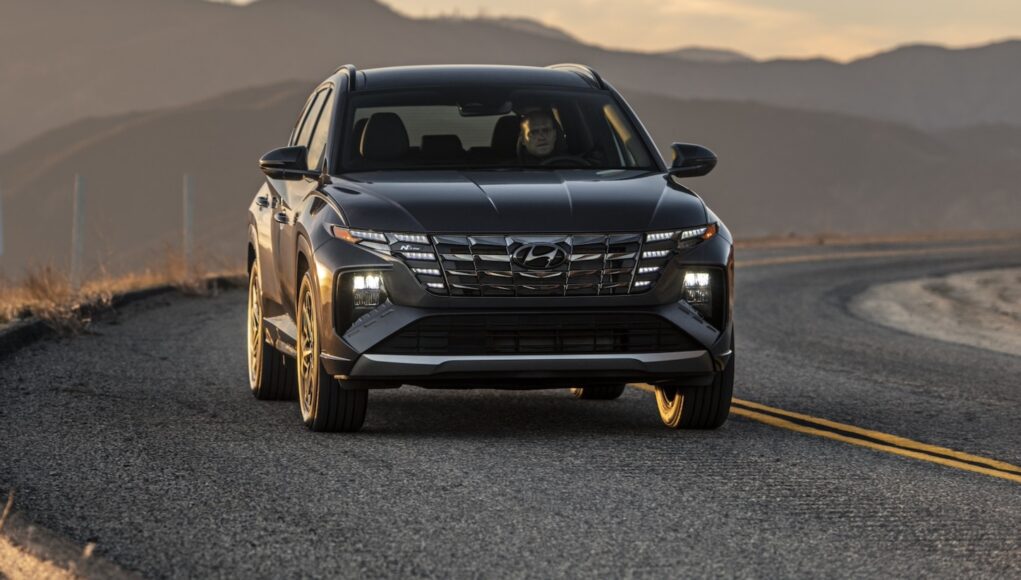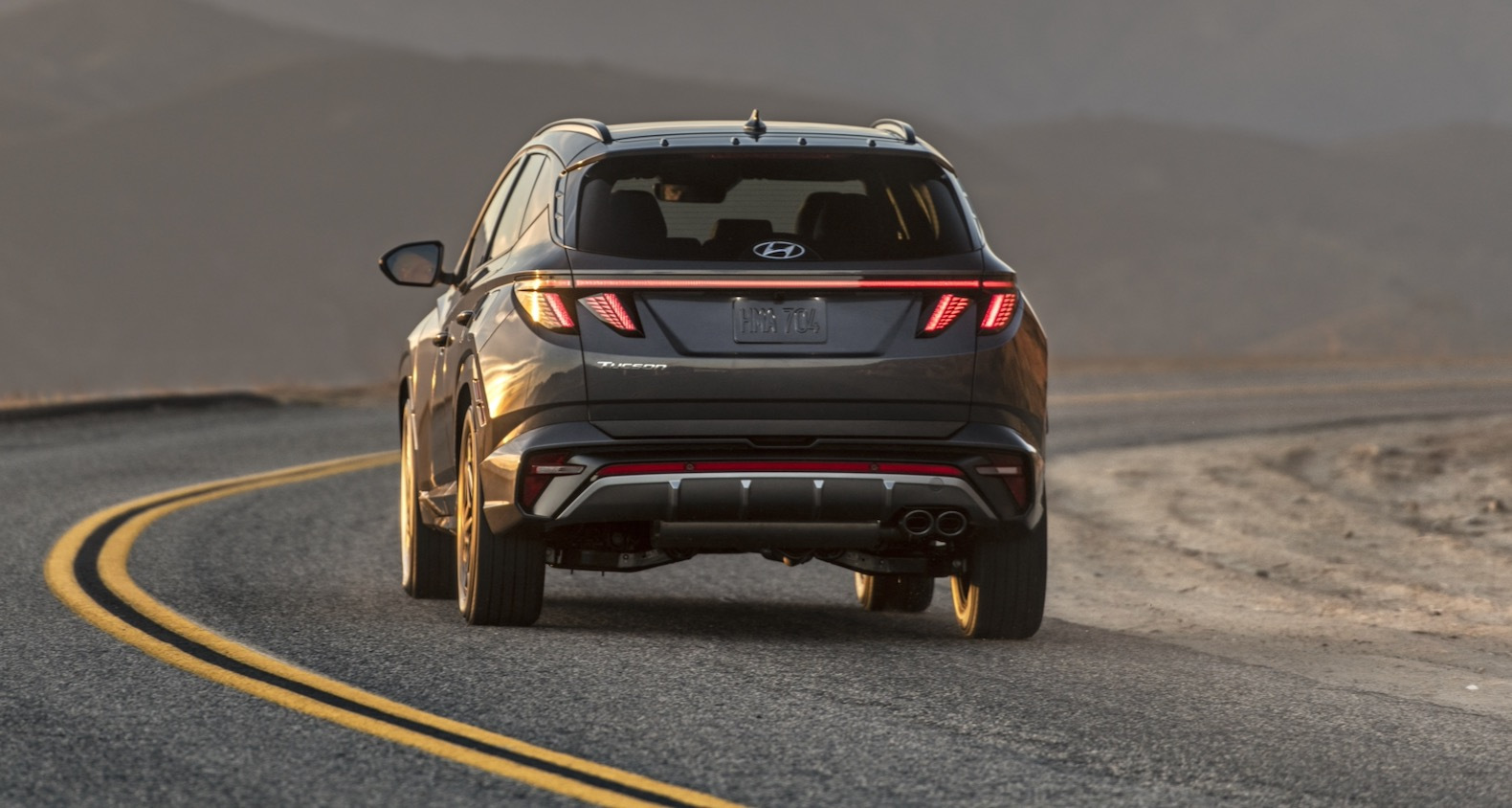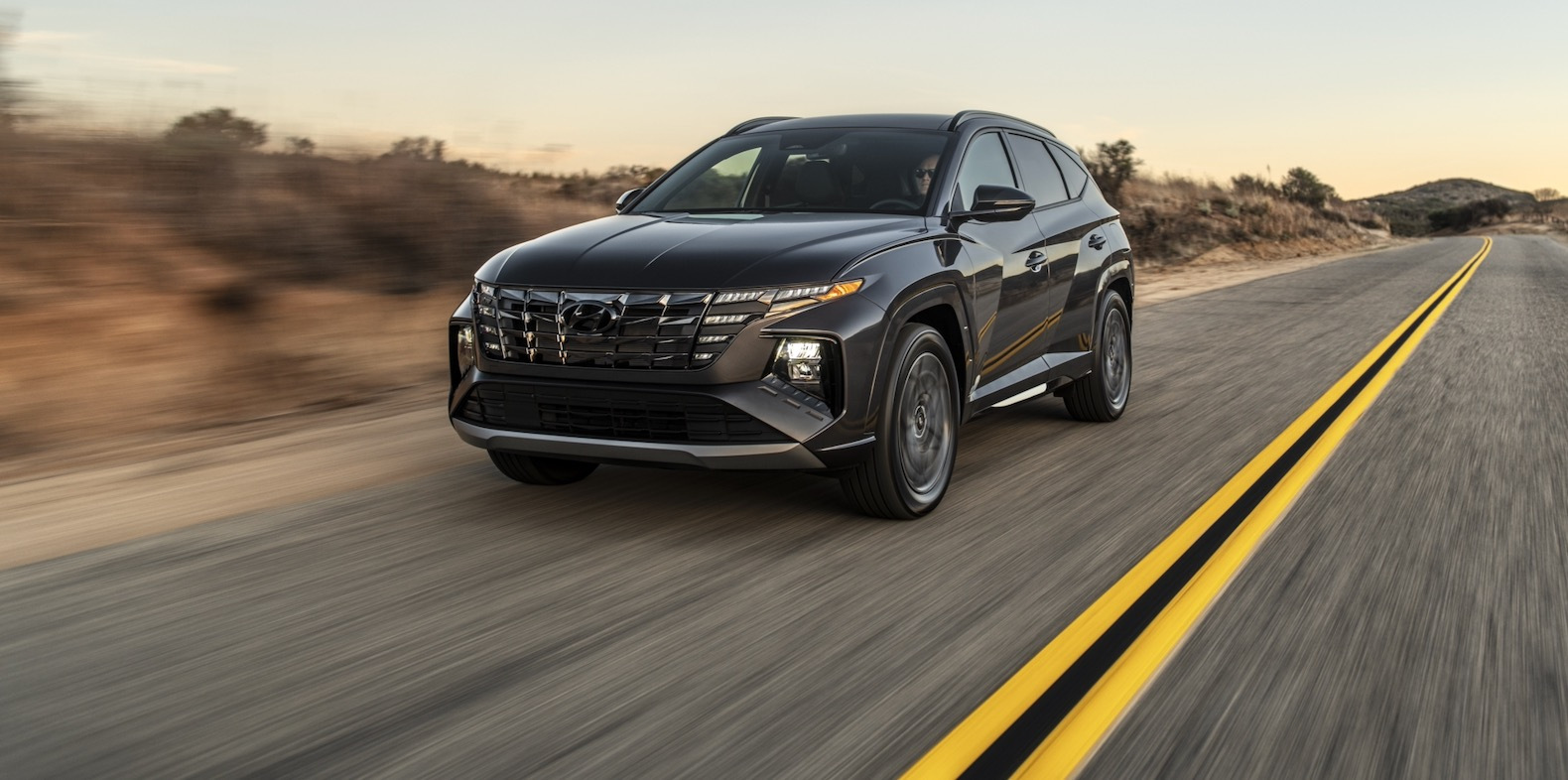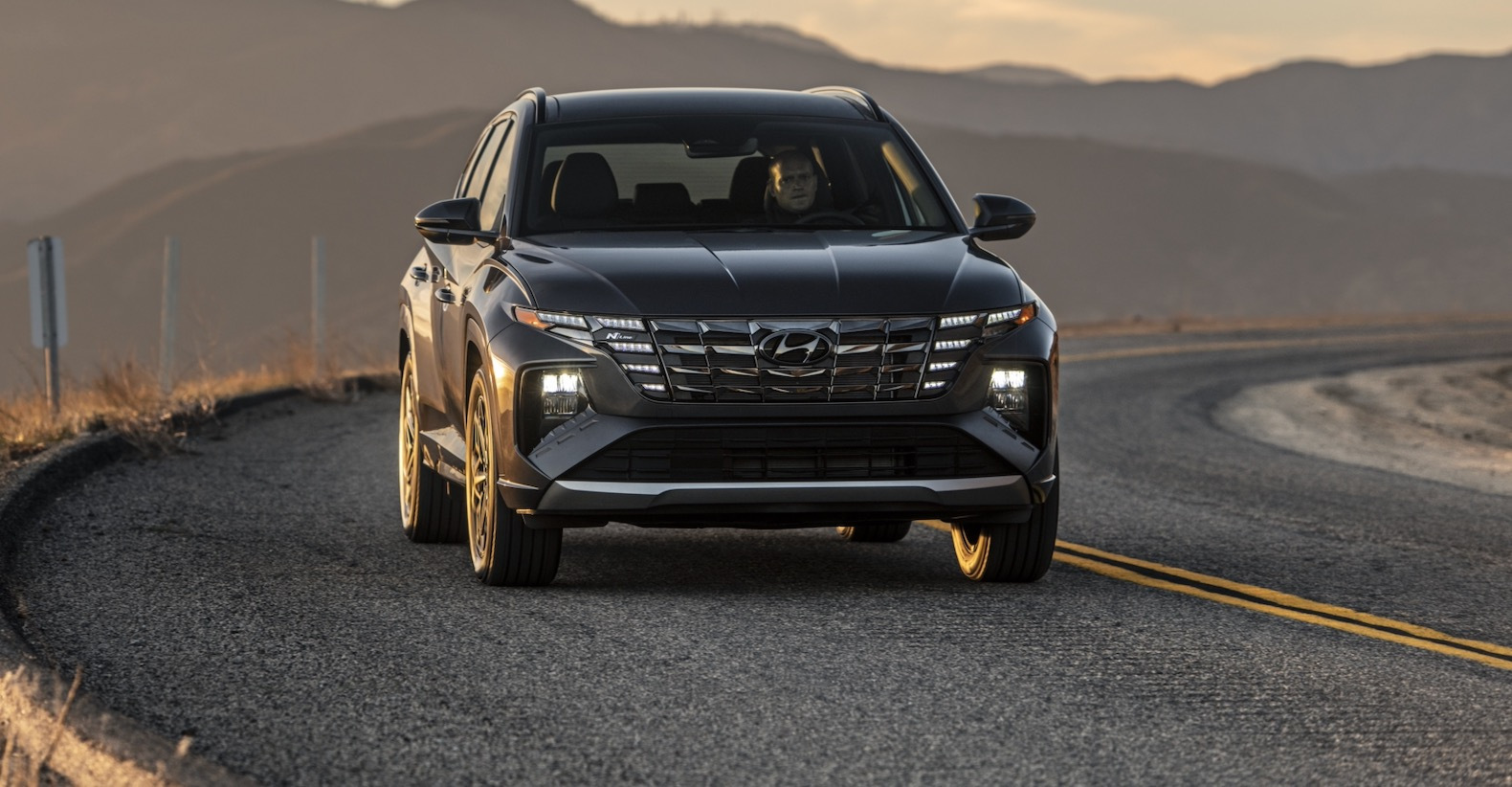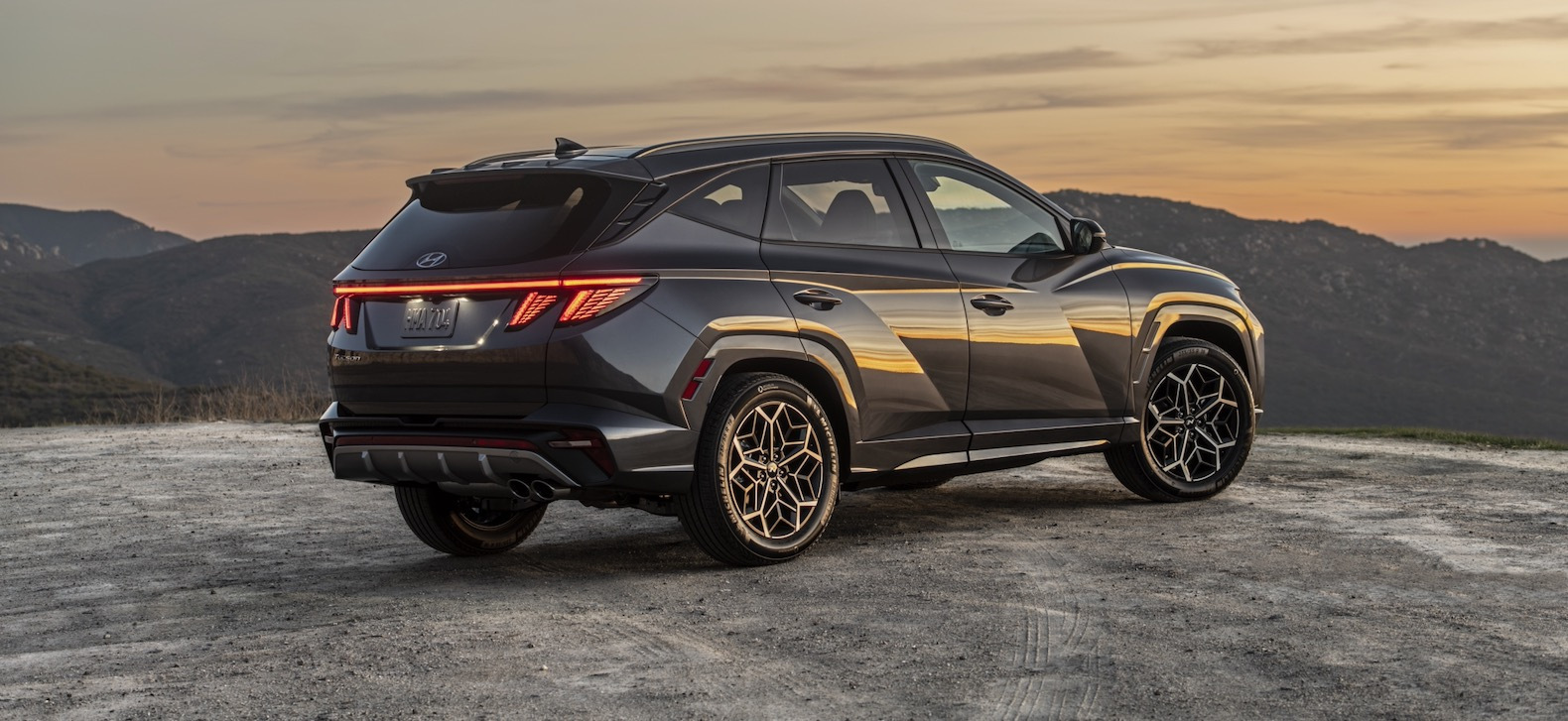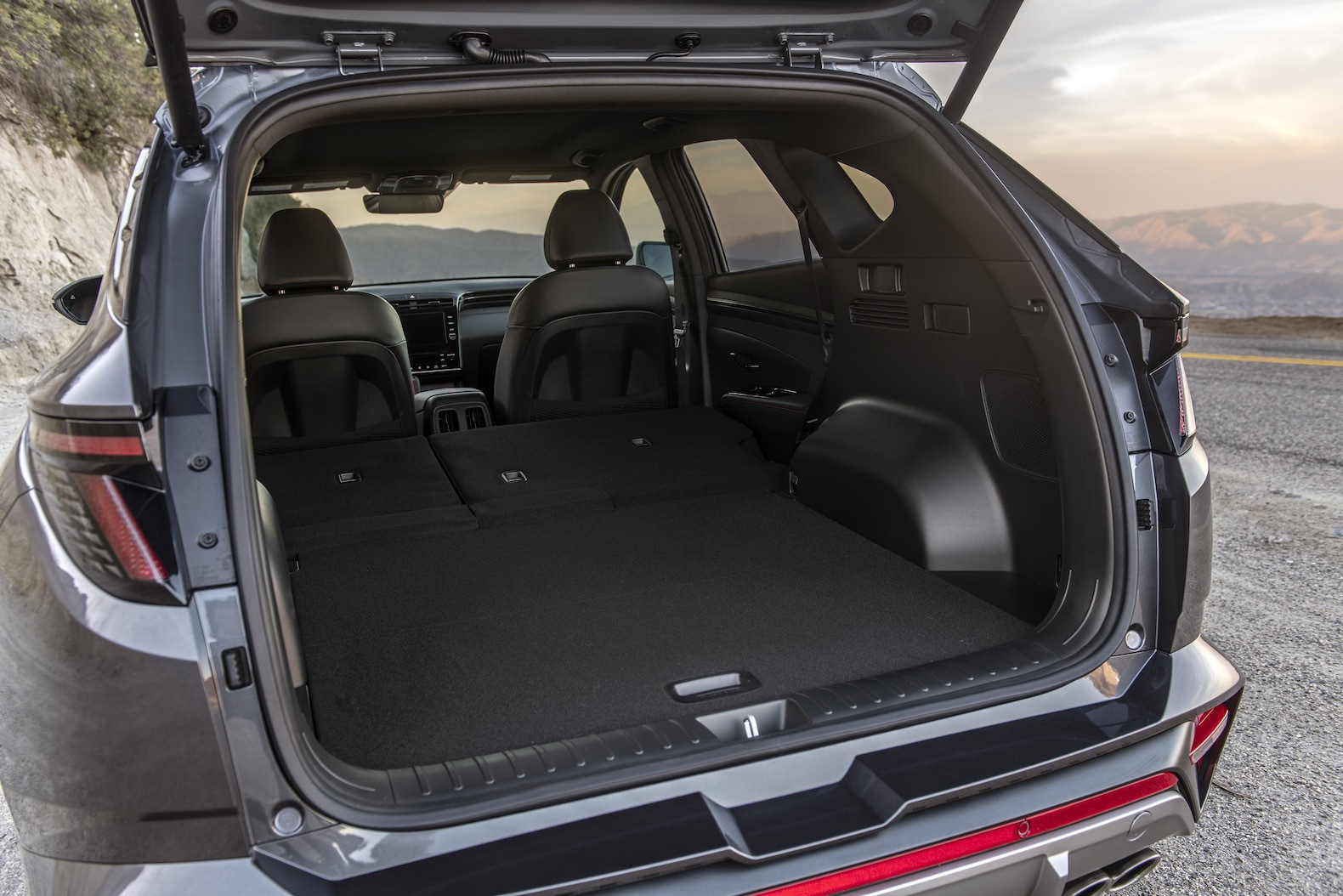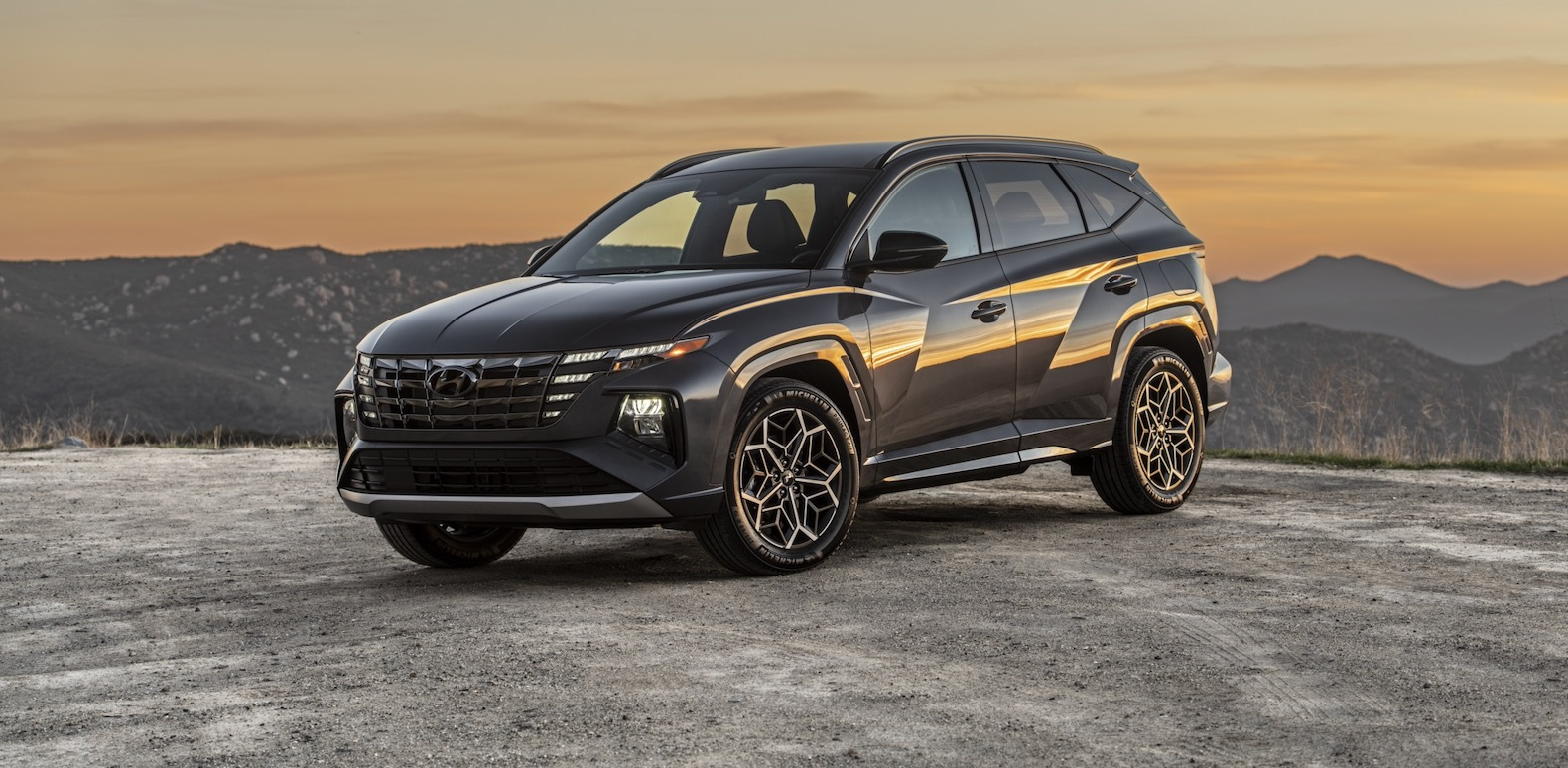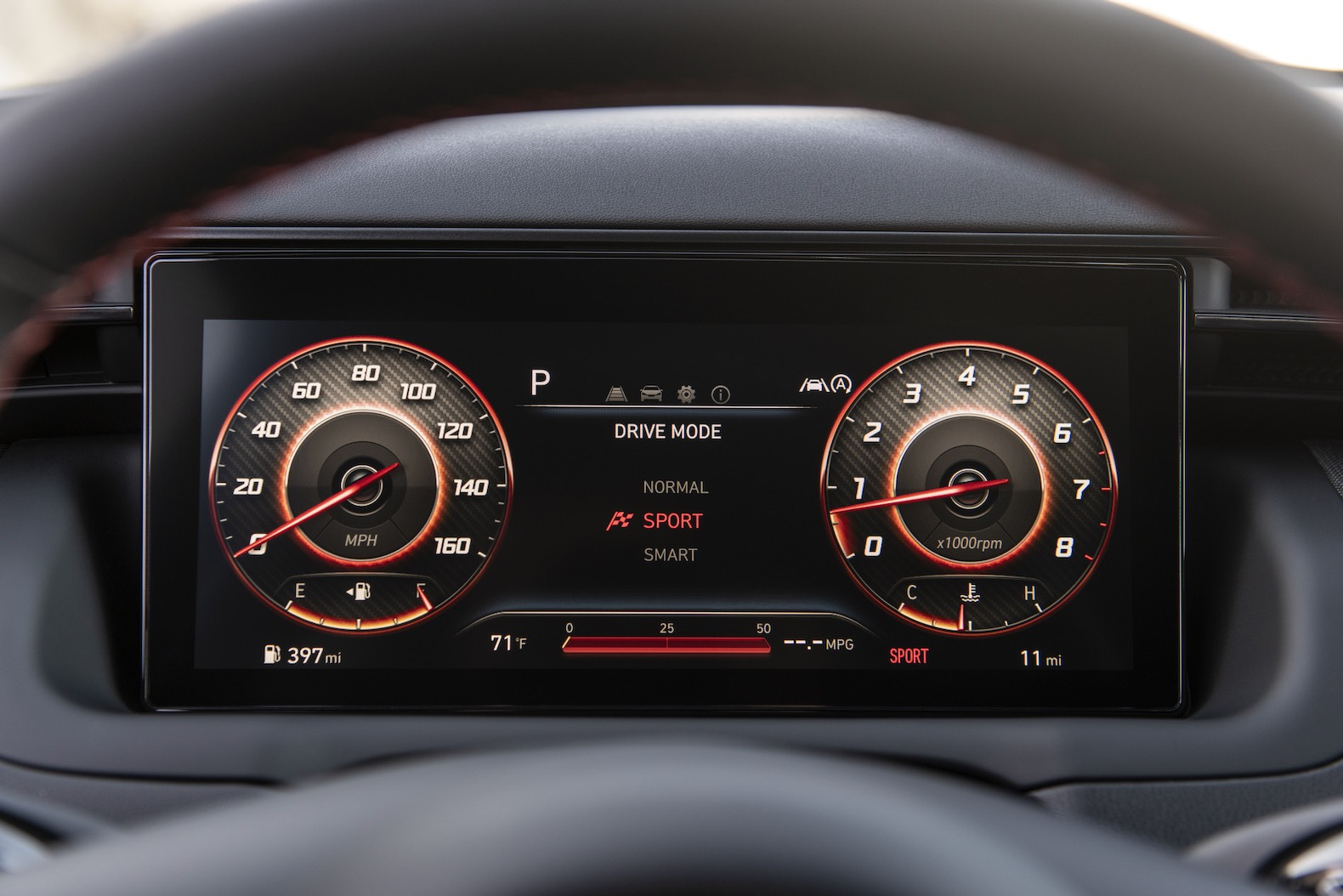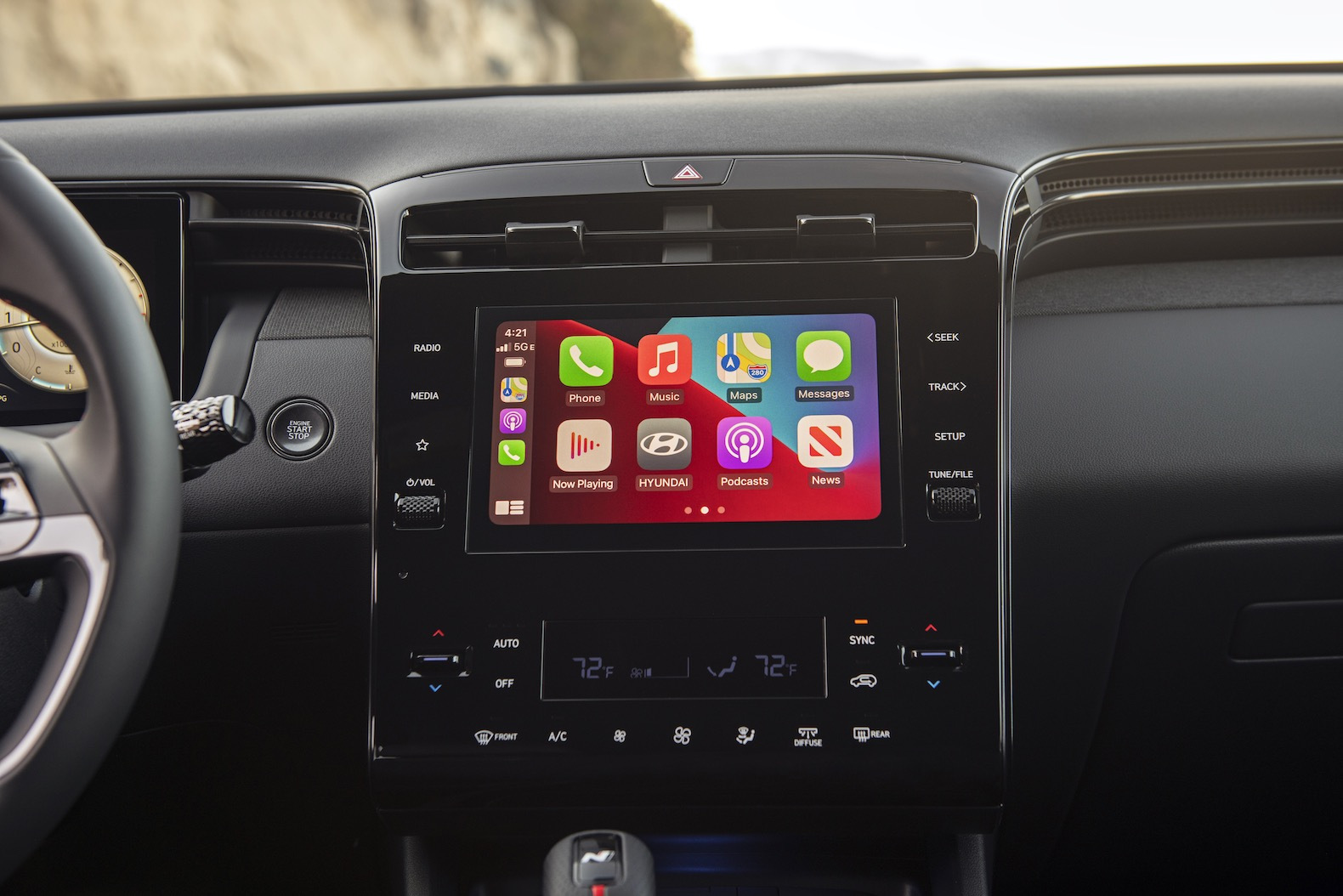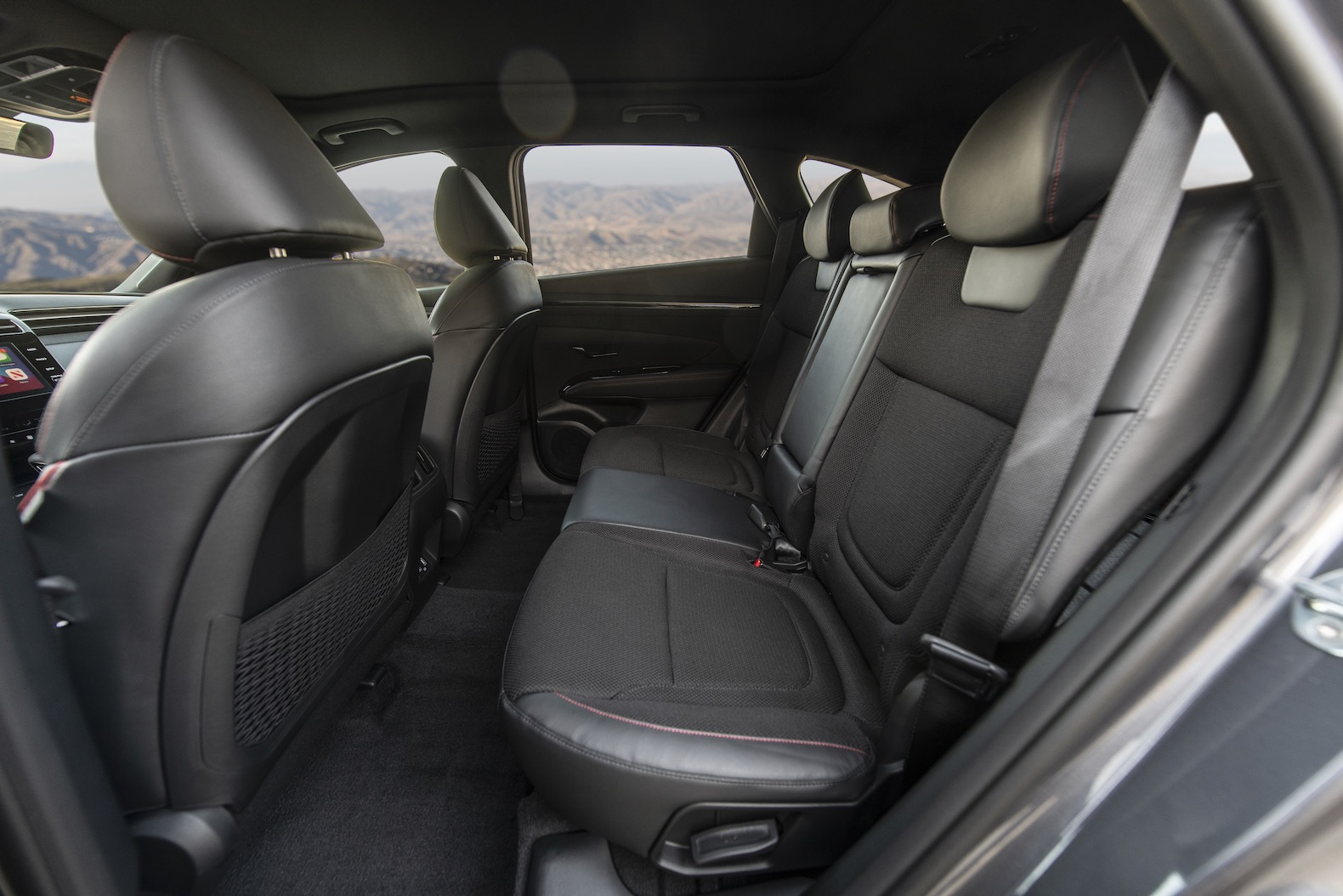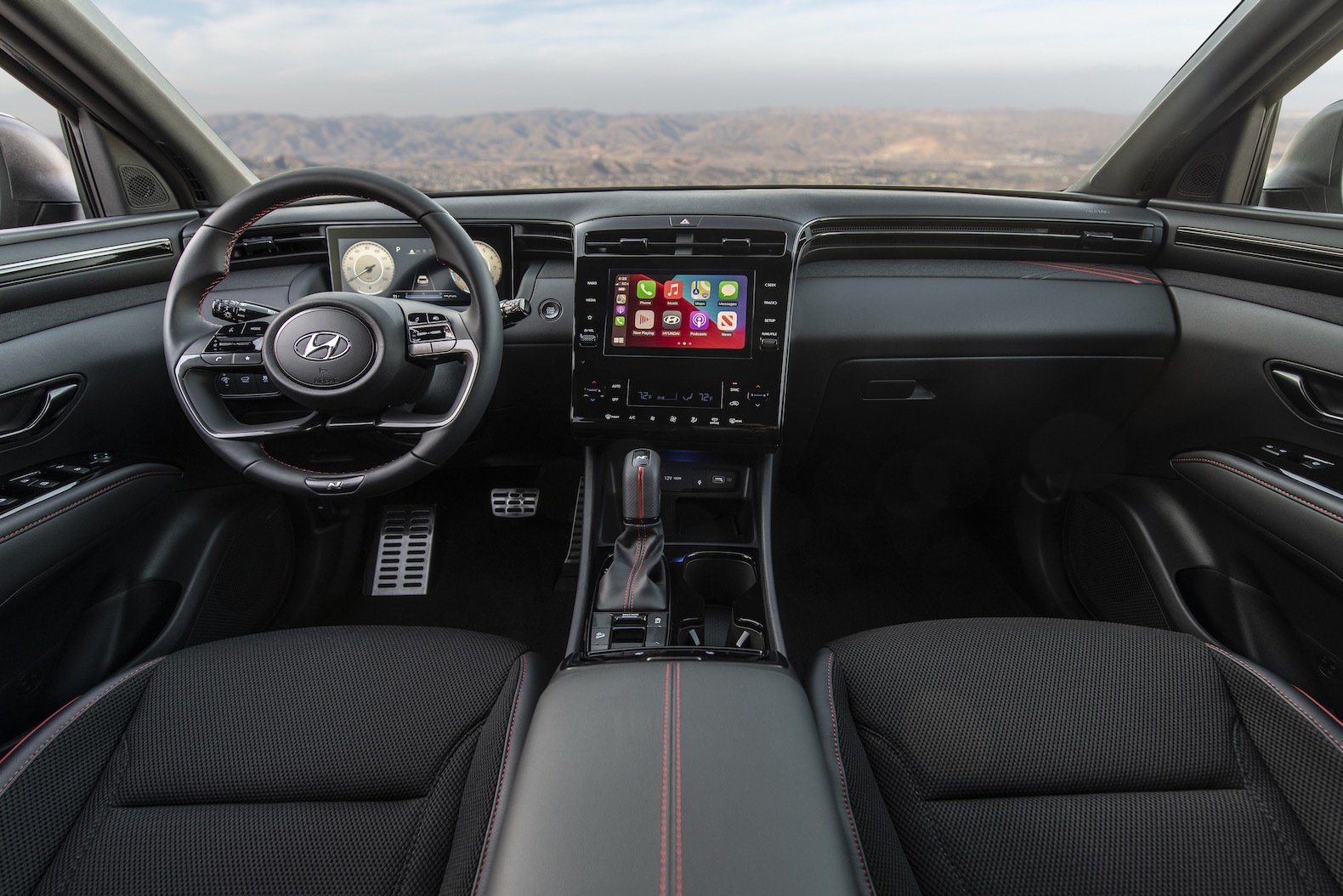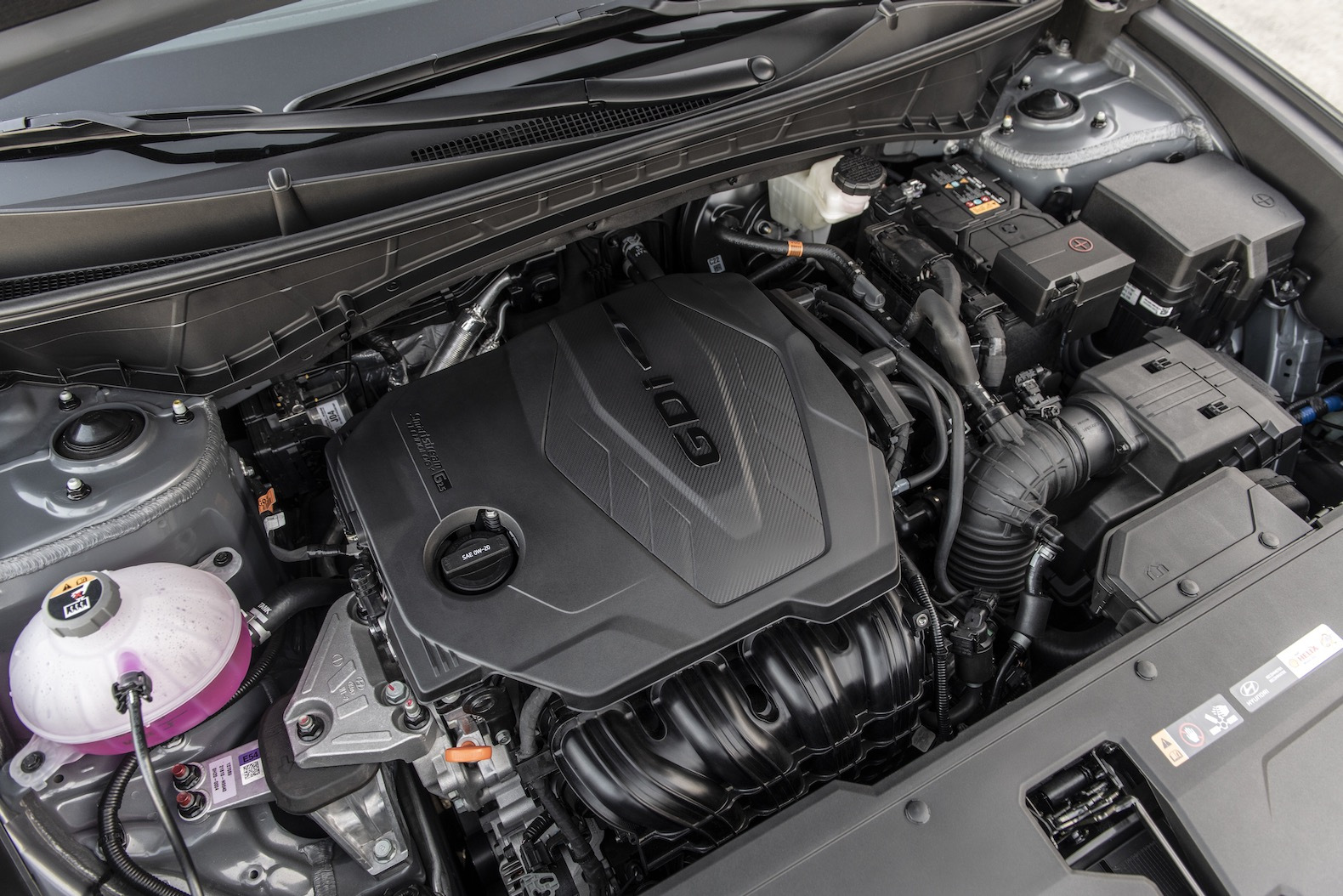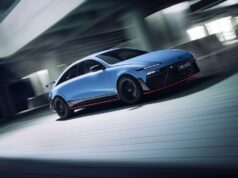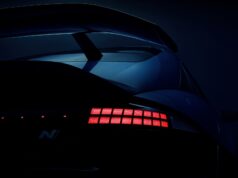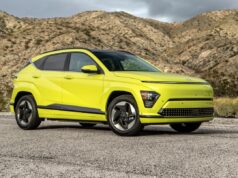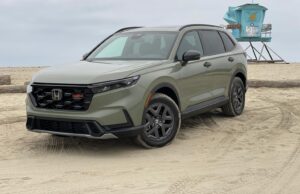The 2022 Hyundai Tucson swings for the styling and efficiency fences–and connects. The Tucson is a five-seat compact crossover that has been completely redesigned for 2022 to better compete in automotive’s most hotly contested segment. It competes with the Honda CR-V, Toyota RAV4, Ford Escape, and Nissan Rogue. The redesigned 2022 Tucson comes out swinging, due to strong technology offerings, comfortable and roomy interior, and plentiful safety features.
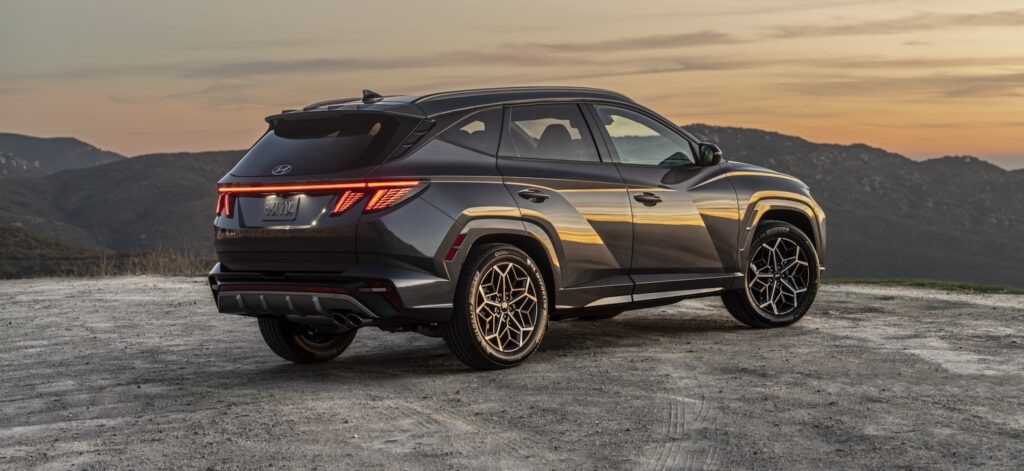
The Tucson is anonymous no more, with angular styling that makes it stand out. Bold choices inside and out pay off here, with the Tucson’s striking grille and angular sides drawing plenty of eyes on the road. In stark contrast to the old Tucson’s anonymous styling, the redesigned Tucson opts for the same angular approach that Hyundai also took with the recently redone Elantra to give it some visual panache. The sides are filled with dramatic creases on both doors, topped by a sharp line that feeds into the taillights.
Up front, the LED daytime running lights have been integrated into the grille. The lights look like grille elements until they’re illuminated, hiding in plain sight the rest of the time. The rear of the Tucson hides the exhaust tips behind the rear bumper and comes with plenty of sharp lines of its own from the downward pointing taillights and diamond detailing in the rear bumper. Hybrids get few changes, save for the energy-consumption screens baked into their digital displays.
The Tucson hybrid performs better, and it’s more efficient. We give the Tucson kudos for its performance and commendable ride quality. Gas-powered models will be more popular, but their acceleration and fuel economy is just average. It’s the ride that makes the crossover a standout. All of the gas models come standard with front-wheel drive, with all-wheel drive available as a $1,500 option. All Tucson hybrids come with AWD standard.
There is a clear difference in performance between the Tucson’s two powertrains and the hybrid is the obvious choice between the two. Powering the gas versions is a 187-hp, 2.5-liter inline-4 that makes 178 lb-ft of torque and comes mated to an 8-speed automatic transmission. The hybrid’s 1.6-liter turbo-4 gas engine offers similar output on its own (180 hp and 195 lb-ft of torque), but adds on an electric motor to bump total system output to 226 hp. Instead of a continuously variable transmission, the hybrid opts for a 6-speed automatic which helps to make the driving experience feel more natural. All-wheel drive is optional on all gas models and standard on the hybrid.
After driving both models, it’s hard to recommend the gas version. The electric boost from the motors feels like a necessary additive, when contrasted to the 2.5-liter engine’s hesitancy when it comes to acceleration, both off-the-line and when attempting passes as well. The hybrid also uses an e-handling system that utilizes the electric motor to improve handling and make the vehicle feel more balanced while turning.
Tucson Hybrids have light steering and good ride quality at moderate to high speeds, even with the added weight of the battery pack and bigger wheels. In city driving, the suspension doesn’t gather itself as quickly after bumps, and lumpy roads can cause it to skitter in search of traction. It’s much the same with the Plug-In Hybrid, which carries up to 4,235 lb of curb weight around, which can generate some suspension heaving. In either, switching the drivetrain into Sport mode narrows its steering focus and snips off shifts more quickly, at the expected cost of efficiency.
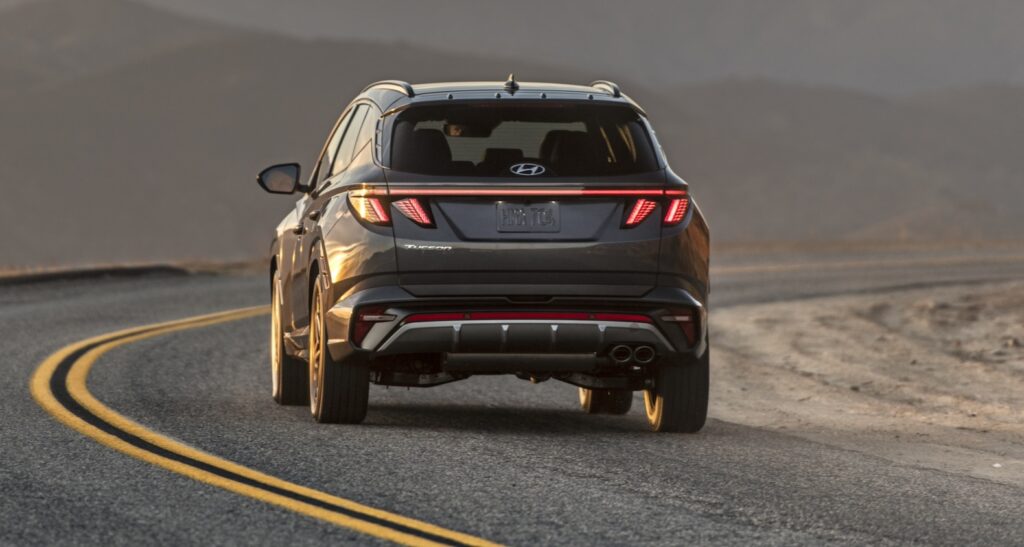
Fuel economy is much better in the Tucson hybrid models. Gas models are rated at 26 mpg city, 33 mpg highway, 29 mpg combined for FWD versions, while the AWD models are rated at 24/29/26 mpg. The way to get the best fuel economy is of course with the hybrid, which is rated at 38/38/38 mpg for the Blue trim and 37/36/37 mpg for the SEL Convenience and Limited trims. That’s a significant increase over the gas model and makes it easier to make up for the difference in price between the vehicles over a shorter period of time. The plug-in hybrid earns an EPA-rated 33 miles of electric range, 80 MPGe, and 35 mpg combined. It’s the clear efficiency winner.
The Tucson earned top safety ratings and offers a robust set of safety features. The Tucson has not yet been crash tested by the NHTSA, but the IIHS gave it a Top Safety Pick+, which is the industry’s most rigorous safety recognition. In addition to automatic emergency braking, the Tucson comes with active lane control and rear occupant alerts. The SEL adds blind-spot monitors and adaptive cruise control that works down to a stop. Limited models offer the most safety equipment, adding a surround-view camera system, rear automatic braking, front and rear parking sensors, and blind-spot cameras that show a live display of the Tucson’s flanks in the instrument panel.
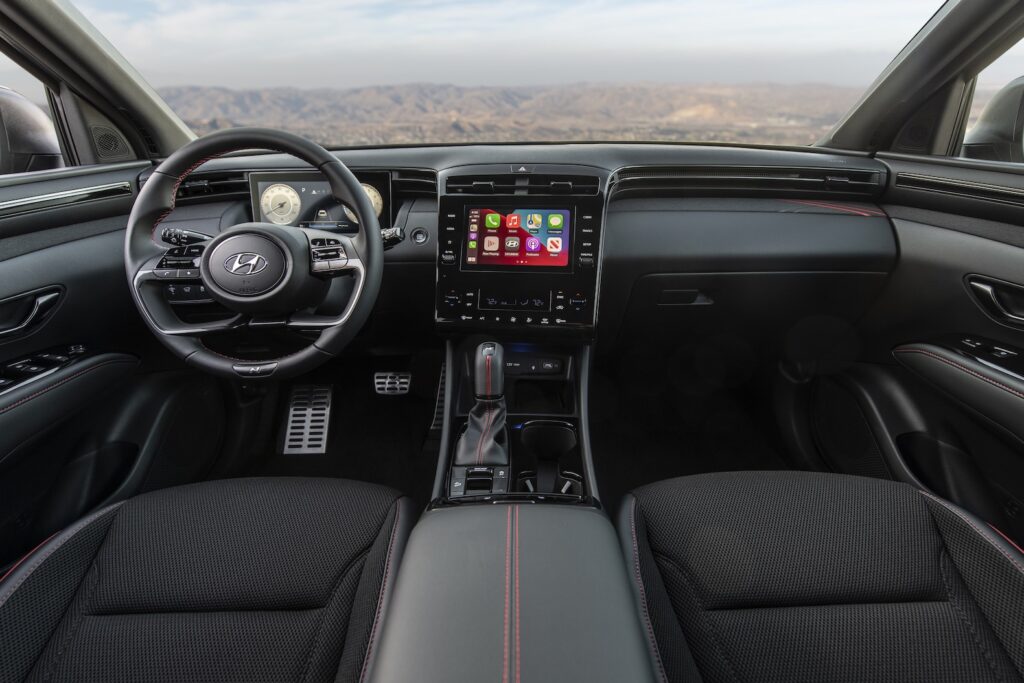
The Tucson’s interior hones down the hard bevels and drapes digital displays over the center stack in a waterfall of techno. Just like the outside, the interior look is entirely different though it takes fewer risks. There’s hardly any complex surfacing inside, other than the twin hoops that lower the dash and put distance between it and the front passengers.
The center console is now mostly composed of a glossy black panel that also houses the multimedia screen (8.2-inches standard, with a larger 10.3-inch display standard on the Limited only). It looks much more modern but watch out for fingerprints on the glossy surface. Some Tucsons adopt a digital gauge cluster and a touchscreen for secondary controls.
The redesigned Tucson is larger, adding cargo space and lots of rear leg room. The redesigned Tucson is much larger for 2022, though it still feels compact sized when parking and driving it thankfully. The wheelbase has been stretched by 3.4 inches to 108.5 inches, and overall length is up 6.1 inches to 182.3 inches, which puts it much closer in size to its rivals, the RAV4 and CR-V. Cargo volume has also jumped to 38.7 cubic feet behind the rear seats from 31.0 cubic feet (for gas models), topping out at 74.8 cubic feet with the seats dropped.
Inside, that additional space is felt the most in the rear seats and the cargo area. The Tucson’s front seats are mostly supportive, though a thigh seat extension would be appreciated. Cloth seating is standard, with leather upholstery optional on the SEL and standard on the Limited. Rear leg room is now up to 41.3 inches, giving the back seat plenty of room to fit two adults. In hybrid models, there’s actually more rear leg room than front leg room. The rear seat can also recline quite a bit for added comfort, and with the optional panoramic sunroof equipped it feels like an airy and expansive space.
The Tucson’s technology and safety features are impressive. The Tucson’s value proposition was strong before and after the redesign is even stronger. An 8.0-inch touchscreen with wireless Apple CarPlay and wired Android Auto is standard even on the base $26,135 Tucson SE, providing a solid technology baseline for the rest of the Tucson lineup.
Both Limited models, the gas and the hybrid, do offer an enticing amount of equipment but come with a large price tag as well. The best combination of features and value is the SEL with the Convenience package, that costs $30,285 and adds on premium features like wireless smartphone charging, power sunroof, a 10.3-inch digital instrument panel, and a power liftgate among other features.
For those interested in the hybrid, the SEL Convenience for $32,835 holds the most appeal. It has all of the features mentioned above, but adds standard AWD and a panoramic sunroof as well. The Limited hybrid tops the charts at $38,535, with the matching 10.3-inch screens for both the multimedia and instrument panel, heated front and rear seats, LED headlights, a surround-view camera system, leather upholstery, and blind-spot cameras. The Plug-In Hybrid Limited runs $44,445. All Tucsons come with a 5-year/60,000-mile warranty.
Hyundai’s Tucson redesign is sweeping, changing it from an anonymous crossover into something distinct, inside and out. Built from dozens of complex origami folds, the Tucson is a brilliant exercise in distinct but fresh styling helping the Tucson to punch way above its pay grade. With cutting edge technology, great value, and efficient powertrains; the mid-size Hyundai SUV is quite the silent contender.

